1989 Toyota Land Cruiser Repair, Service & Tires
Get Started
Complete Auto Care for Your 1989 Toyota Land Cruiser
-
TIRES FOR YOUR 1989 Toyota Land Cruiser View Tire Info GET TIRE PRICING
-
REPAIR FOR YOUR 1989 Toyota Land Cruiser View Repair Info SCHEDULE REPAIR
-
MAINTENANCE FOR YOUR 1989 Toyota Land Cruiser View Maintenance Info SCHEDULE MAINTENANCE
-
OFFERS FOR YOUR 1989 Toyota Land Cruiser Limited Time Tire Offers VIEW ALL COUPONS
1989 Toyota Land Cruiser Tires
Recommended Tires | Tire Information
1989 Toyota Land Cruiser Tires Sizes, Speed Ratings, and Inflation
Not sure about your 1989 Toyota Land Cruiser tire size? Use the following chart to find information on tire size, speed rating, and inflation.
| Trim Level | Speed Rating | Inflation in PSI F/R | Tire Size |
|---|---|---|---|
| 1989 Toyota Land Cruiser Base* | None | 29 PSI/29 PSI | P235/75R15 |
| 1989 Toyota Land Cruiser Base* | None | 30 PSI/30 PSI | 31x10.50R15LT/C |
|
1989 Toyota Land Cruiser Base* Speed Rating: None Inflation F/R: 29 PSI/29 PSI |
|
1989 Toyota Land Cruiser Base* Speed Rating: None Inflation F/R: 30 PSI/30 PSI |
* Note: these models have different tire sizes depending on vehicle options.
Recommended Tires for Your 1989 Toyota Land Cruiser
What tires are best for a 1989 Toyota Land Cruiser? Check out the following tire brands and types.
 Blizzak DM-V2
Blizzak DM-V2
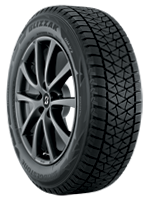
- No warranty
- Winter
- Winter
 Destination M/T2
Destination M/T2
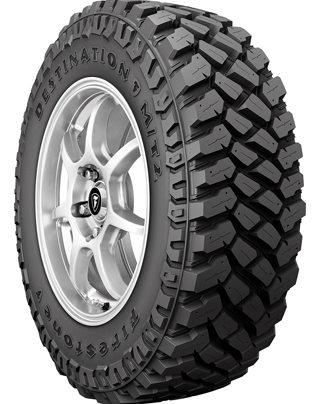
- No warranty
- All-Season
- Light Truck Tires
 Winterforce 2 UV
Winterforce 2 UV
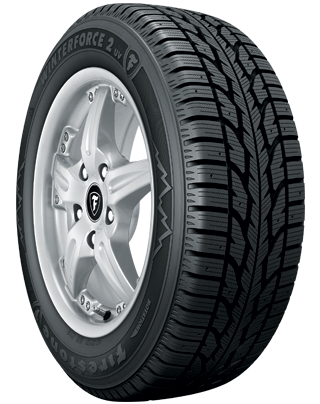
- No warranty
- Winter
- Winter
 Destination X/T
Destination X/T
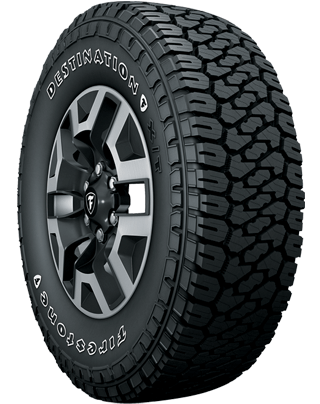
- Gold Pledge Limited Warranty
- All-Season
- Light Truck Tires
 Destination A/T2
Destination A/T2
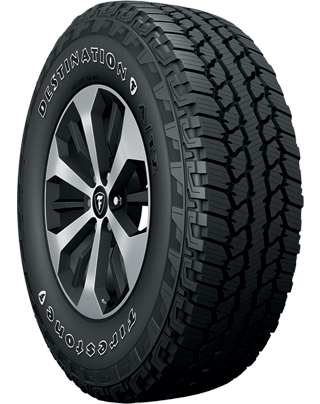
- Gold Pledge Limited Warranty
- All-Season
- Light Truck Tires
 Destination LE3
Destination LE3
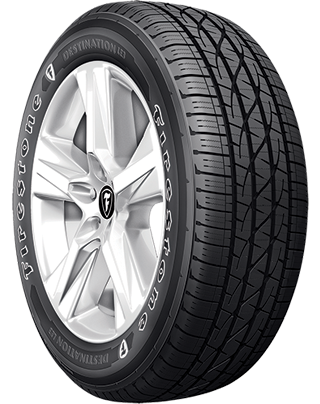
- No warranty
- All-Season
- Light Truck Tires
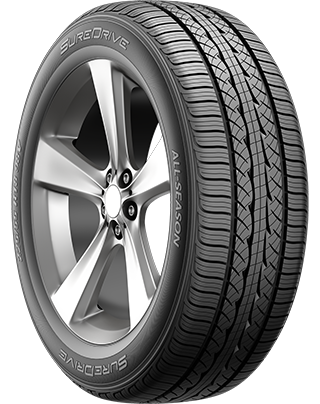
- No warranty
- All-Season
- Passenger Tires
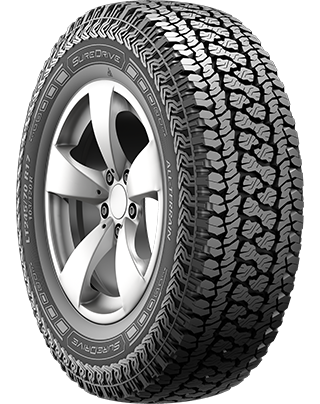
- No warranty
- All-Season
- Light Truck Tires
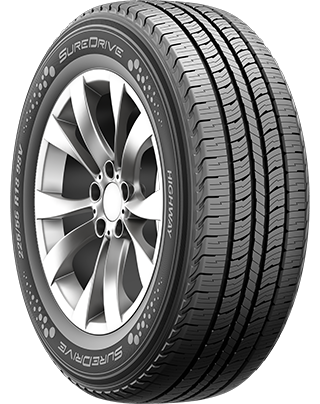
- No warranty
- All-Season
- Light Truck Tires
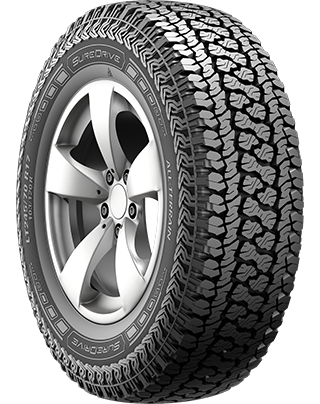
- No warranty
- All-Season
- Light Truck Tires
 Extensa A/S II
Extensa A/S II
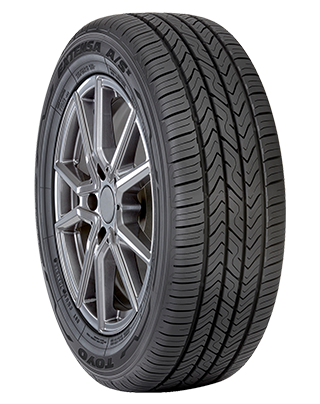
- No warranty
- All-Season
- Passenger Tires
 OPEN COUNTRY A/T III
OPEN COUNTRY A/T III
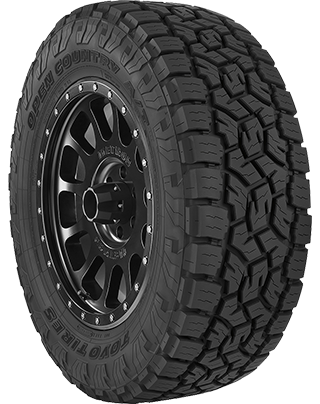
- No warranty
- All-Season
- Light Truck Tires
 OPEN COUNTRY HTII
OPEN COUNTRY HTII
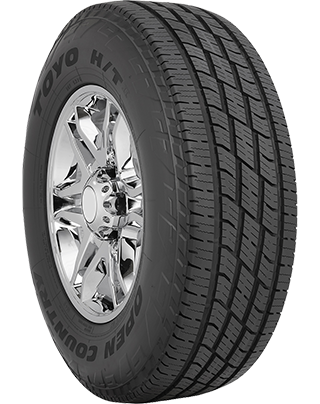
- No warranty
- All-Season
- Light Truck Tires
 OPEN COUNTRY M/T
OPEN COUNTRY M/T
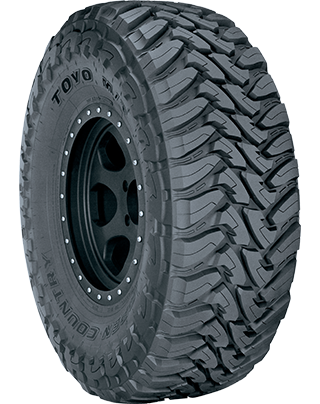
- No warranty
- All-Season
- Light Truck Tires
 OPEN COUNTRY R/T
OPEN COUNTRY R/T
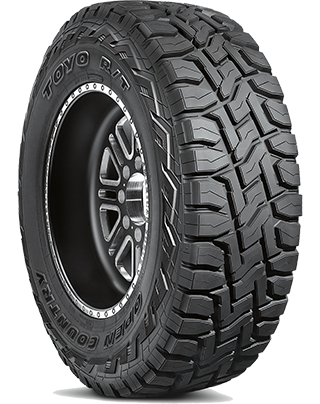
- No warranty
- All-Season
- Light Truck Tires
Choosing 1989 Toyota Land Cruiser Tires
Apart from finding the right tire size, you also want to think about a couple of other things when getting new Toyota Land Cruiser tires like which tire brands you like most and where you drive. When thinking about your driving conditions, consider where you live (mountains vs. city vs. countryside) and the kind of weather can catch you off-guard. (Watch out Tornado Alley!) Many drivers who live in states that experience all four seasons choose to purchase two sets of tires: one for summer and one for winter. Other drivers buy one set of all-season tires instead. That way they don't have to return to the tire shop and their vehicle is always ready for sun, rain, and light snow!
Driving style is next on the list to think about when buying tires. If you're an avid off-roader who yearns to pioneer new paths, you have very different tire needs than a highway commuter who doesn't hit the hills very often. Talk to a tire technician at Firestone Complete Auto Care for help choosing the best tire for you, or start shopping for Toyota Land Cruiser tires online.
Installing Toyota Land Cruiser Tires
We sell tires, but we also service them and care for all the around-the-wheel components. We're your tire shop and a complete service center for tire installation, maintenance, repair, rotation, and alignment! Shop 1989 Toyota Land Cruiser tires online and schedule an installation appointment.
1989 Toyota Land Cruiser Tire Questions
-
Why does Toyota tire inflation matter? A small decrease in tire pressure can have a big impact on your driving. Maintaining proper tire pressure can help improve braking time, increase fuel economy, and boost tire lifespan.
-
What do the numbers on my Toyota Land Cruiser tires mean? The numbers on your tire sidewall give you information about tire speed rating, traction, treadwear, tire size, and load carrying capacity. Chat with a tire technician to learn how to read the numbers on your Toyota tires!
-
Can I check the tread depth on my Toyota tires at home? Stay on top of your tire tread depth to help avoid a dangerous drive. You can check tread depth with a penny. Hold the penny so that Abraham Lincoln is facing you, then place your penny into a tread groove upside down. If you can see the top of Abe’s head, your tread is shallow and it might be time for new Toyota Land Cruiser tires. Grab a penny. Hold the so that Abe Lincon's head is facing you and his hair is pointing toward the ground. Then, place the penny into a tread groove. If you can see the top of Abe’s head, your tread is shallow and it might be time for new Toyota Land Cruiser tires.
1989 Toyota Land Cruiser Repair
How do I learn more about auto repairs? Click on a service below to read about the types of Toyota Land Cruiser repairs we do at Firestone Complete Auto Care.
1989 Toyota Land Cruiser Repair Information
No driver looks forward to car repairs. But at Firestone Complete Auto Care, we strive to give you the excellent repair experience you deserve. When it’s time for 1989 Toyota Land Cruiser repair services, head to your nearest Firestone location and rest easy knowing that your Land Cruiser is in capable hands. We’ll start by assessing what repairs may be needed, and we’ll provide you with a detailed explanation of what we recommend. If a repair isn't necessary, we won't recommend it.
How Much Does Toyota Land Cruiser Repair Cost?
The cost to repair your 1989 Toyota Land Cruiser depends on the type of repair, costs of replacement parts or repair supplies, how much labor the repair will take, and the state you live in. And check back often — we update our deals regularly!
A few different aspects can influence repair costs for your 1989 Toyota Land Cruiser, like
Questions About 1989 Toyota Land Cruiser Auto Repairs
-
Do I need to follow Toyota's maintenance schedule? One of the best ways to prevent 1989 Toyota Land Cruiser repairs is by staying on top of your Toyota maintenance schedule. This schedule is written by the people who made your vehicle and they know best how to keep it running smoothly.
-
What does it mean to be 'in tune' with your car? No, we’re not talking about finding the best jams on the radio! You know your car best, and you’re the first person who will notice if something doesn’t feel right (like new smells, sights, or sounds coming from your car). If you sense that something is 'off,' stop in for a Courtesy Check to have these symptoms checked out ASAP. Early action could help you prevent Toyota Land Cruiser repairs.
-
Why do you recommend certain repairs for my Toyota? Trust is more than just a saying on the wall. It’s a window underneath it. That’s why we won’t recommend services or repairs for your 1989 Toyota Land Cruiser unless we think they’re vital to your safety on the road.
Brake Repair for Your 1989 Toyota Land Cruiser
Your Toyota Land Cruiser may be powered by a strong engine. But if you can’t brake, it might as well be scrap metal. Don't wait if you're experiencing brake squeaks or a loss of braking power. Safe driving and responsive brakes go hand in hand. What's more, waiting for things to figure themselves out can result in more damage to your brakes and your wallet. Go to your local Firestone Complete Auto Care for 1989 Toyota Land Cruiser brake repairs. Our brake repair services include pad/shoe replacement, brake rotor/drum resurfacing, brake fluid exchange/bleeding, and brake caliper and wheel cylinder service.
Toyota Land Cruiser Brakes Frequently Asked Questions
-
Why does my Land Cruiser shake when I brake? Feeling shaking or vibrating in your Land Cruiser as you brake might indicate a few different problems, including worn brake pads or rotors, loose suspension components, damaged brake calipers, or warped rotors. Book an appointment for a free brake inspection as soon as you notice a problem with your brakes.
-
How long can I expect my Land Cruiser brake pads to last? In general, brake pads can last from 30,000 to 40,000 miles. Certain factors, like driving on highways mostly and braking smoothly, can help your brake pads last longer. Hauling heavy loads and riding your brakes can shorten brake pad lifespan.
-
Is it bad if my Land Cruiser is leaking brake fluid when off? Your Land Cruiser has a closed hydraulic brake system, meaning you should not have a brake fluid leak under normal conditions. However, parts of your brake system can wear out over time or become damaged, which can lead to a brake fluid leak.
1989 Toyota Land Cruiser Drivetrain Repairs
Drivetrains for front, rear, and all-wheel-drive and 4WD vehicles are not all the same. You don't want to go to any random shop for drivetrain repair. You want to come see the technicians at Firestone Complete Auto Care. We can fix many 1989 Toyota Land Cruiser drivetrain components Your Toyota could be crying out for driveshaft repair if you notice vibration as your vehicle accelerates, clunks when shifting, heavy vibrations in your floorboards, or resistance when turning.
1989 Toyota Land Cruiser Drivetrain Q&A
-
What are signs my Toyota drivetrain is damaged? Hear noises toward the back of your Toyota Land Cruiser? See fluid leaking? Having issues turning? These could all be signs of drivetrain damage you don't want to ignore. Take action quickly to catch repairs or replacements before something more severe happens.
-
Why is the malfunction indicator light (MIL) on in my Land Cruiser? A multitude of problems can activate your Land Cruiser’s malfunction indicator light (better known as the check engine light), including issues with the engine, transmission, sensors, electrical system, or connectors.
-
How worried should I be about a drivetrain malfunction in my Land Cruiser? Don't ignore a drivetrain malfunction in your Land Cruiser. As soon as you notice a problem, have it checked by a professional mechanic to diagnose the issue and carry out any necessary repairs. Driving with a faulty drivetrain is risky and may further damage your Land Cruiser.
Wheel Alignment for 1989 Toyota Land Cruiser
With an alignment service, adjustments are made to your Toyota Land Cruiser’s suspension system, the connection between the vehicle and the wheels. In an alignment service, your tire angles are adjusted according to measurements recommended by Toyota. Why? So that your tires can make contact with the road at the best possible angle. Bring your 1989 Toyota Land Cruiser in for a wheel alignment and we'll start with an alignment check. If needed, we'll adjust your wheel alignment angles to match Toyota recommendations.
Questions About Toyota Land Cruiser Alignment
-
How can I avoid knocking my Toyota Land Cruiser out of alignment? Hitting a pothole or curb can alter your wheel alignment. So can general wear and tear over time.
-
How frequently should you get a wheel alignment for your Land Cruiser? Check your Land Cruiser owner's manual for Toyota's recommended interval. It's generally a good idea to check your alignment every 6,000 miles or 6 months, depending on which comes first.
-
Does getting new Land Cruiser tires mean you need an alignment? It’s likely not a requirement to get an alignment when you install new tires on your Land Cruiser, but it's a smart idea to do so anyway. An alignment can help ensure even tire wear, smooth handling, and better fuel efficiency.
1989 Toyota Land Cruiser Engine Services
When your Toyota Land Cruiser engine needs repairs, our technicians will make sure you understand what’s going on before they start working on your engine. We make recommendations, but you make the final decision. If a repair isn’t urgent right now, we’ll let you know. If it's necessary for your safety, we'll make sure you understand that, too. We want to give you all the details you need to make an informed decision about your engine repairs. By choosing Firestone Complete Auto Care for Land Cruiser engine repairs and you can feel good knowing that we only use Toyota-compliant replacement parts such as the serpentine belt, oil gasket, fuses, or a different component.
Engine Q&A 1989 Toyota Land Cruiser
-
Why does my Land Cruiser’s check engine light come on when I start it? It's okay if your check engine light comes on when you first start your vehicle. This is a sign that your vehicle is testing its circuits. The light should go off shortly. Bring your vehicle in if it doesn't.
-
Why is my Toyota Land Cruiser making engine noise? Strange engine sounds can be a sign something’s off in your Toyota Land Cruiser. Knocking or tapping could be a symptom of low oil. A high-pitched whistle could signal an intake leak or misaligned belt. Squealing can be traced back to a loose fan belt, and grinding might be a sign of brake problems rather than engine issues.
-
Are you unknowingly damaging your Toyota Land Cruiser engine? Certain driving habits can hurt your engine. These habits include driving on an empty fuel tank, revving your engine while the vehicle is in Park, or slamming the gas pedal while the engine is still cold. Steer clear of these habits to help protect engine performance and efficiency.
Tire Repair for Your 1989 Toyota Land Cruiser
Firestone Complete Auto Care is here for you when your 1989 Toyota Land Cruiser needs flat tire repair or inspection. There’s a chance your tire could be plugged and patched (rather than replaced). Our technicians can inspect your tire and let you know if it is safe to repair. We’ll begin by taking a look at where the damage is, the type and extent of the tire damage, and how all of your tires are wearing.
If we determine that your 1989 Toyota Land Cruiser tire can be safely repaired, we’ll get to work on the steps to fix it: (1) Remove the tire from the wheel for inspection and repair, (2) fill the puncture to keep the moisture out, and (3) secure and seal the inner tire liner to ensure the tire is airtight.
Your Questions About Toyota Land Cruiser Tire Repair, Answered
-
Can I drive my Toyota on a flat tire? A flat tire that’s not addressed can take a terrible toll on the rest of your car. Until you have it repaired or replaced, drive your Land Cruiser as little as possible to reduce your risk of damage to the wheels and alignment – or further damage to that already struggling tire!
-
Will a temporary sealant fix my Toyota's flat tire? Temporary sealants will solve your problem… for a little bit. If you’ve seen temporary or emergency tire sealant before (it usually comes in a can), it can be tempting to turn to this as a solution for your flat tire. Keep in mind that these fixes could buy you some time to get to Firestone Complete Auto Care for a proper repair, but they could also cause some harm in the process (for example, damage to your TPMS). Plus, using a product like this could void your tire warranty.
-
What can cause Land Cruiser tires to keep losing air? Your Land Cruiser tires might keep losing air due to a leaking valve stem, puncture or hole in the tire tread or sidewall, or damaged wheel.
Maintenance for Your 1989 Toyota Land Cruiser
Take care of your Toyota Land Cruiser and it'll take care of you. With the right maintenance at the right time, your Land Cruiser has a good chance of hitting 200,000 miles or more.
1989 Toyota Land Cruiser Maintenance Information
It can be overwhelming, but fortunately, there’s a resource that takes the guesswork out of routine Land Cruiser maintenance. It’s as easy as following the recommended maintenance schedule that’s been written specifically for your 1989 Toyota Land Cruiser! This recommended maintenance schedule is written by the auto manufacturer, Toyota themselves. Driving conditions, climate variations, and other variables can affect which scheduled maintenance services you’ll need; in most cases, though, recommended maintenance will consist of services like tire rotations, vital fluid checks/exchanges, filter changes, brake pad replacement, and oil changes. Scheduling routine service appointments is one of the best ways to help extend your Land Cruiser's life, decrease your risk of dangerous malfunctions on the road, and help you avoid expensive repairs caused by 1989 Toyota Land Cruiser problems later.
Overview of Essential Toyota Land Cruiser Maintenance Needs
Bring your 1989 Toyota Land Cruiser to Firestone Complete Auto Care for factory-recommended maintenance services and an expert technician will begin by performing a Courtesy Check. The Courtesy Check helps us see what we’re working with under the hood, and allows us to alert you to any potential problems before they worsen. Each Courtesy Check includes a free battery test and an inspection of your Land Cruiser's windshield wiper blades, head and tail lights, filters, fluid levels, tires, and alignment.
Firestone Complete Auto Care is the place to go for 1989 Toyota Land Cruiser maintenance. So visit us regularly, or visit us urgently. Many locations are open on weekends and in the evening.
1989 Toyota Land Cruiser Maintenance Questions
-
When should I have Toyota Land Cruiser alignment checked? Check your car for pothole damage! If you’ve recently hit a pothole (or even if you don’t remember hitting one… they can be sneaky!) check your tire treads, tire sidewalls, and wheels for damage. Potholes can also knock your car out of alignment, so have your alignment checked if you suspect you’ve driven over a rough patch of road lately.
-
When should I use high mileage oil in my Toyota Land Cruiser? Do you have more than 75,000 miles on your Toyota Land Cruiser? If so, request to switch to high mileage oil at your next oil change. This type of oil is specially formulated to keep aging engine parts in the best possible condition.
-
Can Toyota dashboard warning lights wait? It's better to get them addressed as soon as possible. An illuminated dashboard light means something in your vehicle isn't functioning like it should. Letting problems linger can mean bad news for your Toyota Land Cruiser, so be sure to take your car in for service as soon as you notice an illuminated dashboard light.
Battery Size & Replacement for 1989 Toyota Land Cruiser
Not sure what battery to get for your Toyota Land Cruiser?
| Battery | Engine | Warranty | Cold Cranking Amps | |
|---|---|---|---|---|
| 27-3 | L6/4.0L | Replacement 24 months | Performance months | 810 |
1989 Toyota Land Cruiser Car Batteries
Generally, car batteries last from three to five years. Don’t get stranded by your Land Cruiser’s car battery. Replace it regularly instead! Watch for signs that your current battery is getting too old or too weak. A slow engine crank, an illuminated check engine light or battery signal, swollen battery case, corroded battery terminals, or weak lights can all signal that your battery is waving goodbye.
You can also get a Free Battery Test at your local Firestone Complete Auto Care. Visit us for a complimentary battery check and, if necessary, a battery replacement to help keep your 1989 Toyota Land Cruiser running! Automotive batteries are just one of our many areas of expertise. Our technicians are familiar with Toyota-specific recommendations for Land Cruiser car batteries’ reserve capacities and cold cranking amps. Get help choosing the battery size that fits your car perfectly, and schedule a fast car battery replacement at your earliest convenience.
Commonly Asked Toyota Land Cruiser Battery Questions
-
Why won't my Toyota Land Cruiser battery stay charged? A battery is in its final hour when it will no longer hold a charge. The battery may be too old. Or, you may have been leaving your car doors ajar and the cabin light at night. Stop by for a complimentary battery check at your favorite Firestone Complete Auto Care and get a handle on your car battery’s health.
-
How long do car batteries last? The typical 12-volt car battery may last three to five years, depending on the type of battery, the driving conditions, and how well the battery is maintained.
-
What is the white, crusty substance accumulating on my Land Cruiser’s battery post? The white, crusty stuff that can accumulate around Land Cruiser car battery terminals is called corrosion. It is caused by a chemical reaction between the battery acid and the air, which creates a white, powdery substance that can build up on the terminals over time. Corrosion can interfere with the flow of electricity between the battery post and the car's electrical system, sometimes leading to poor electrical performance, difficulty starting, and even premature battery failure.
1989 Toyota Land Cruiser Oil Changes
Toyota recommends changing your 1989 Land Cruiser’s oil at regular intervals. Your Land Cruiser may need an oil change right away if your check engine/oil change light is on, you hear engine knocking, smell oil inside the vehicle, or notice an unusual amount of exhaust. You might need an oil change more frequently than what’s recommended by Toyota if you regularly haul heavy loads, frequent dusty roads, adventure off-road, or go long distances at low speeds.
Your local Firestone Complete Auto Care has the right 1989 Toyota Land Cruiser motor oil: either synthetic or conventional. Talk with a teammate and consult your owner's manual before picking a motor oil. At Firestone Complete Auto Care, you can choose from the following oils: Quaker State® Advanced Durability™ conventional oil, Pennzoil® High Mileage Vehicle® motor oil, Pennzoil Platinum® Full Synthetic motor oil with PurePlus™ Technology, and Shell Rotella® heavy-duty engine oil. During your oil change service, a technician will change your Land Cruiser's oil, replace and recycle your used oil and oil filter, check all of your other filters, top-off essential fluids, and perform a free inspection on the rest of your vehicle. Let the experts take care of your Land Cruiser’s engine by making an oil change appointment today.
1989 Toyota Land Cruiser Oil Change Questions
-
Why is the oil light on in my Toyota Land Cruiser? Your Toyota Land Cruiser oil change reminder light may come on if you're overdue for an oil change. The oil pressure light will typically come on if the oil level in the engine is too low, the oil pump is failing, you have a clogged oil filter, or there's a faulty oil pressure sensor.
-
Can I change my Toyota Land Cruiser oil at home? First off, changing your own oil isn’t as easy as you’d think. You’ll have to buy special tools and figure out a way to recycle the old oil properly. Getting a professional oil change reduces the risk of something going wrong during the service, but also helps your car perform down the road.
-
Why is my Toyota Land Cruiser exhaust smoke grayish or blue? You could have an oil leak and have a case of burning oil. Looks like it’s time for a professional to take a look. The leak could be the result of worn valve seals, fried piston rings, or old cylinder walls.
1989 Toyota Land Cruiser Engine Tune-Ups & Maintenance
Periodic tune-ups can bring more power back to your Land Cruiser’s engine. The Firestone Complete Auto Care location in your community offers several Toyota Land Cruiser engine tune-up services. The standard Firestone Tune-Up is one service option. This includes the installation of new spark plugs and a visual inspection of your engine’s components, plus a lifetime warranty on parts*. The second service focuses on your Land Cruiser's filters, specifically replacing the air filter and fuel filter. The third tune-up option is a fuel system cleaning service, which is a three-step process that removes varnish, dirt, and carbon deposits on your Land Cruiser's fuel injectors, throttle body, and throttle plate. The result? Restored fuel system performance. Here’s something to remember when choosing services: the mileage and service history of your Land Cruiser can determine what kind of service it needs. Talk to a technician about your driving style, mileage, and service history to learn more about your vehicle's specific needs.
*Ask a Firestone Complete Auto Care teammate about full terms and conditions for warranties.
Common Engine Tune-Up Q&A for 1989 Toyota Land Cruiser
-
Will it hurt my Toyota Land Cruiser to drive with old spark plugs? Replace spark plugs on time or about every 30,000 miles or so. Spark plugs are small but mighty. The spark of electricity that the plug emits across a small gap creates the ignition for the combustion needed to start your car. Without that spark, your car won't start.
-
What should I do if I see leaks under my Land Cruiser? Don't ignore puddles of fluid under your Toyota Land Cruiser. It could signal a coolant leak, brake fluid leak, or an oil leak. Let any one of these leaks linger and it could cause engine damage.
-
How often do Toyota Land Cruiser fuel injectors need to be cleaned? The cleaning schedule for vehicle fuel injectors varies depending on your driving conditions and the type of fuel you use. Some manufacturers suggest cleaning your fuel system as part of routine maintenance, while others will recommend it on an as-needed basis if you’re experiencing poor performance. Reference your Toyota owner’s manual for exact guidelines.
Suspension Service & Repair for 1989 Toyota Land Cruiser
When you first bought your 1989 Toyota Land Cruiser, the ride was probably so smooth that you didn’t even think about it! Lately, though, your ride’s been feeling a little bumpy. Perhaps your Land Cruiser feels bouncy, sways to one side, or makes an unusual noise when going over a speed bump. The first sign of problems is a good time to bring your 1989 Toyota Land Cruiser in for suspension and steering service. We’ll get to the root of the issue and, if your car needs steering and suspension repairs, we'll explain all of your options and the potential cost.
Questions About 1989 Toyota Land Cruiser Steering & Suspension
-
Why is my Toyota Land Cruiser bouncing excessively? Excessive bouncing in your Toyota Land Cruiser might be due to damaged struts or shocks that are unable to absorb road bumps effectively, causing your vehicle to feel more like a pogo stick than a smooth ride.
-
Why does my Land Cruiser front end dip forward when I brake? The forward momentum and weight transfer to the front wheels during braking can cause your Land Cruiser's front end to dip forward. A damaged or faulty suspension system may fail to distribute the weight and force effectively, causing the front end to dip even more.
-
Does tire pressure and tread depth impact my Toyota's suspension? Maintaining your tires can help reduce strain on the suspension, nd also let you know when it's time to replace your tires. A faltering steering and suspension system could lead to uneven tire wear.
A/C Service for Your 1989 Toyota Land Cruiser
Our trained technicians will do what they can to solve your 1989 Toyota Land Cruiser A/C problems. During this initial A/C performance check, we’ll look at the state of your 1989 Toyota Land Cruiser’s A/C system to evaluate what repairs are necessary (if any). This check will include an examination of system pressure, a visual inspection, and a leak test.
While your 1989 Toyota Land Cruiser’s air conditioner is being serviced, we’ll also do an A/C evacuation and recharge. To do this, one of our technicians will remove the refrigerant in your A/C system (if there is even any left to remove). Next, they will evacuate the system according to Toyota's recommendations. The A/C system is recharged with new refrigerant.
1989 Toyota Land Cruiser A/C System FAQs
-
What’s making my Land Cruiser A/C put out warm air? If your car’s air conditioning isn’t blowing cold air at all (or it tries, then turns warm), you could have a clogged expansion valve, a faulty compressor clutch, a leak, or a malfunctioning fuse in the system.
-
What can cause an A/C system leak? To put it simply, age and moisture are some of the main causes of leaks in your A/C. Over time, rubber gaskets and seals can wear out, which pushes much-needed refrigerant out of your Land Cruiser’s A/C system — and lets outside moisture get in, which can take a toll on internal A/C components.
-
Why does my Land Cruiser’s A/C only work when the car is moving? A problem with one or more of your air conditioning or electrical system components could cause the A/C to only work when your Land Cruiser is moving. You may be low on refrigerant, or the cooling fan could be faulty.
1989 Toyota Land Cruiser Transmission Service & Repairs
The transmission delivers power from the motor to your wheels so that you can drive at your desired speed. Since the transmission has to translate the precise amount of power for your desired amount of speed, even the smallest transmission problems should be addressed right away. 1989 Toyota Land Cruiser transmission problems can show up as shifting delays, grinding or jumping during acceleration, the car shaking on the road, or whistling noises or a burning smell coming from beneath the hood. Let Toyota Land Cruiser transmission problems linger and you could see your fuel economy decrease or discover that your Land Cruiser’s not even driveable. Our technicians know how to service your 1989 Land Cruiser up to Toyota-recommended standards. If you think there’s something wrong with your Land Cruiser’s transmission, schedule an appointment at your local Firestone Complete Auto Care to help diagnose, treat, and prevent major transmission issues.
1989 Toyota Land Cruiser Transmission Questions & Answers
-
How often does my Land Cruiser transmission fluid need to be checked? Regularly checking and exchanging your 1989 Land Cruiser’s transmission fluid is one of the best ways to help the transmission system perform. Some technicians would say that between 30,000 and 60,000 miles is a good timeframe for having your Toyota's transmission fluid checked and replaced, but that timeline can vary depending on how your vehicle is used and your manufacturer’s recommendations. The good news is that transmission fluid leaks are affordable to repair and easy to spot.
-
Is it possible for transmission fluid to leak from my Toyota Land Cruiser? Yes, your Toyota Land Cruiser can develop a transmission fluid leak. As your Land Cruiser ages, parts of the transmission system might wear out or break down, leading to a leak and possible transmission issues. Common causes of transmission fluid leaks include worn seals, a damaged transmission housing, a loose or cracked transmission pan, an overfilled transmission, or faulty transmission lines.
-
Can I still drive my Toyota Land Cruiser if it has a transmission fluid leak? You should avoid driving with a transmission fluid leak. Your transmission system relies on transmission fluid to operate properly, and a leak may decrease performance, cause your Land Cruiser to overheat, or even lead to transmission failure.
Get a 1989 Toyota Land Cruiser Vehicle Inspection
Every service performed at Firestone Complete Auto Care includes a multi-point Courtesy Check. To start, one of our technicians will check the battery in your Toyota Land Cruiser to determine how much charge remains. The check will continue with a visual inspection of your Toyota Land Cruiser's lights, windshield wipers, filters, alignment, tires, hoses, belts and fluid levels.
While every visit to your local Firestone Complete Auto Care includes a Courtesy Check, we also offer an in-depth Complete Vehicle Inspection for your 1989 Toyota Land Cruiser. During a Complete Vehicle Inspection, we’ll visually check everything that’s on the list for a Courtesy Check. Additionally, we’ll perform an examination (by hand!) of your exhaust system, steering and suspension, and brakes. This inspection is aimed at informing you of any major problems that could require preventative maintenance.
Depending on your location, you may be able to take care of your state inspection or safety test at your local Firestone Complete Auto Care. Inspections are performed on a state-by-state basis and requirements vary.
Common 1989 Toyota Land Cruiser Vehicle Inspection Questions
-
How do I know if I should have an inspection on my Toyota Land Cruiser? If you’ve noticed something that doesn’t feel quite right in your car lately, a Courtesy Check could give you peace of mind. We can help you get to the bottom of strange engine noises, a jerky steering wheel, or an engine that's hard to start.
-
Help! My 1989 Toyota Land Cruiser failed the state inspection test. Can you get it to pass? Don’t panic! Come in for a complete inspection today and we’ll find (and repair) the root cause before you have your vehicle retested.
-
What's the ideal timing for a full vehicle inspection on my Toyota Land Cruiser? The best time to get a complete vehicle inspection for your Toyota Land Cruiser is before going on a road trip for the peace of mind. Another great time is when something abnormal occurs, and you can't pinpoint the issue. You might notice new dashboard lights, hear strange noises from under the hood, or your steering wheel doesn't feel like it once did.
1989 Toyota Land Cruiser Radiator Repair & Service
Keeping up with regular radiator maintenance in your 1989 Toyota Land Cruiser is essential for long-term engine health. Toyota recommends that you replace coolant (also called antifreeze) at certain intervals, but it’s also wise to keep an eye out for signs of a failing radiator. Your radiator could be close to causing an engine breakdown if you see coolant leaks under your car, high engine temperatures, or a dashboard light that indicates low coolant.
If you bring your vehicle to Firestone Complete Auto Care, we start with a comprehensive inspection of your Toyota Land Cruiser’s cooling system. We’ll do a machine-powered coolant exchange on the system, and then we’ll top off or replace the fluids that were removed (like chemicals, lubricants, and sealants). Lastly, we’ll perform a pressure check to look for leaks. If you’re about to lose your cool over a too-hot engine, rest assured that we’ll take excellent care of your 1989 Toyota Land Cruiser at Firestone Complete Auto Care.
Common Toyota Land Cruiser Radiator Questions
-
Why is the coolant light on my Toyota dashboard on? Pay attention to the temperature gauge and lights on your dashboard. If a low coolant warning light comes on or your dashboard temperature gauge keeps rising, it’s likely that your engine is about to overheat (and could leave you stranded on the road). Wait for the engine to cool down, then have your coolant system checked immediately at your nearest Firestone Complete Auto Care.
-
Why is my Land Cruiser overheating? Your Toyota Land Cruiser engine could overheat due to low coolant, a clogged radiator, a damaged water pump, a malfunctioning cooling fan, or a faulty thermostat.
-
My Land Cruiser radiator sounds like it's rumbling or boiling! What's up? Your Land Cruiser’s cooling system could contain air pockets or your radiator might be clogged. Another possibility is a faulty radiator cap, which is an easy fix!